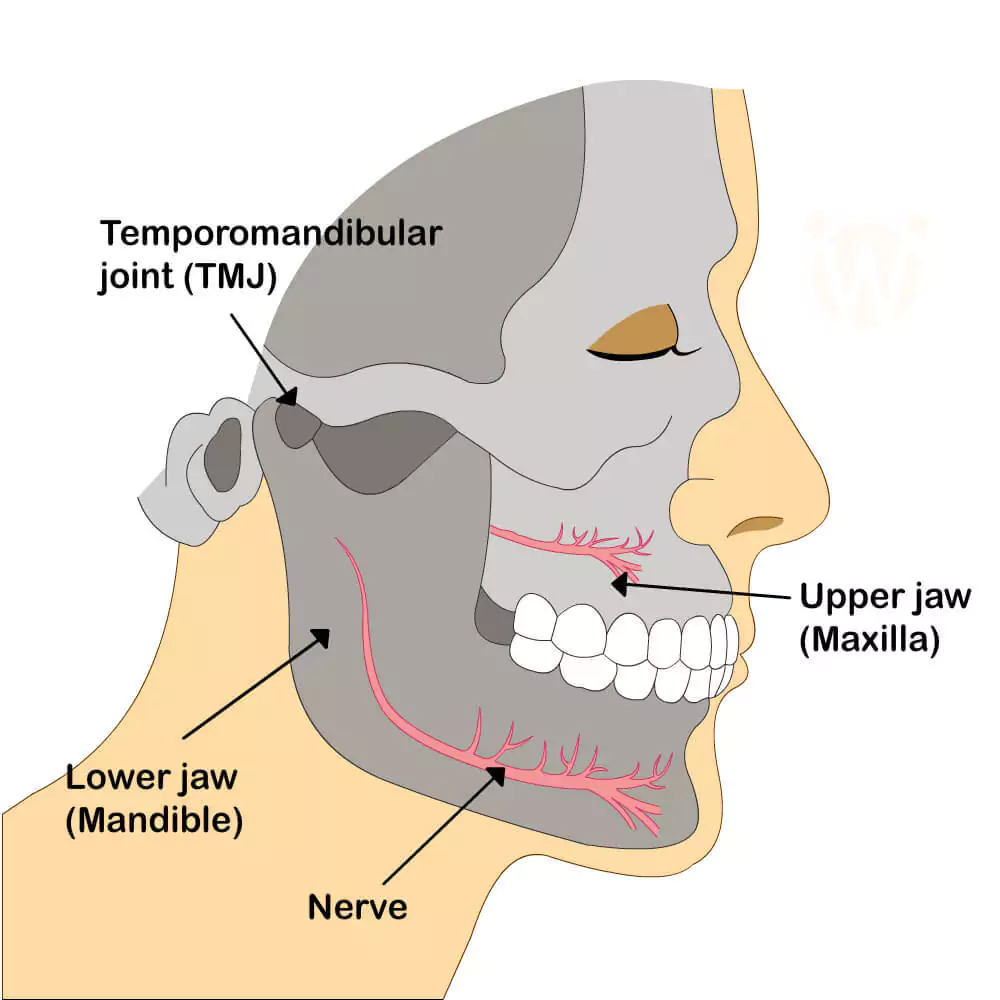Oral Motor Exercises: Jaw Exercises for Effective Communication
By Rajini D
Last Updated: November 10, 2023
Speech is an essential tool of communication. To improve such speech skills among children, jaw exercises are very beneficial. Practicing jaw exercises fosters oral-motor functioning, enabling children to pick up their speech better. Jaw exercises strengthen the muscles in and around the mouth, jaw, and tongue, helping in better articulation and speech production.

Why are jaw exercises important?
Jaw exercises strengthen jaw muscles. It is important for better speech production.
Articulation:
For better articulation of sounds and words, the jaw muscles should be strengthened enough. The coordination of jaw muscles is necessary to articulate the speech sounds, improving overall speech clarity. These jaw exercises can strengthen the oral motor muscles, which allows better control during swallowing and chewing. Hence, a child’s overall oral health can be improved, which in turn fosters his or her development.
Learn more: Articulation Disorder in Children: Signs, Causes & Treatment
Language skills:
Jaw exercises can develop oral motor skills that are necessary to produce a wide range of sounds and are crucial in the development of language skills. Proper speech sound production can help the children to learn the language better. When they are able to produce the speech sounds they hear, they can better understand the meaning of those words and remember them well.
Also read: Understanding Speech Chain: Key to Better Communication
Control and coordination:
With these jaw exercises, proper muscle control can be achieved. Muscle control and coordination can help to achieve control over the movements of the mouth, tongue, and lips during speech production. With enhanced muscle control, the sound formation can be more precise. It can also facilitate better transitions between various words and sounds.
Swallowing and feeding:
With better muscle control through these jaw exercises, the swallowing and feeding abilities can also be improved. When the ability to chew and swallow is improved in children, better digestion takes place, which keeps up good health. This enables the child to learn more, improving the strength and coordination of jaw muscles, thus helping in the overall oral health and development of the child.
Better communication:
Oral motor control can improve speech skills and communication abilities, boosting self-confidence and leading to better interactions. Social communication abilities would also improve when the child’s jaw movements allow for speaking clearly and confidently. Improved social interactions can increase the confidence levels of the child.
Exercise Schedule Sample
| Day of the Week | Exercises | Duration | Notes |
|---|---|---|---|
| Monday | Jaw Opening, Side-to-Side Movement, Licorice Pull | 5 minutes for each | Focus on gentle movements; observe any discomfort. |
| Tuesday | Massaging, Jaw Bite, Quiet Jaw | 5 minutes for each | Ensure relaxation between exercises; monitor for fatigue. |
| Wednesday | Jaw Push, Jaw Pull, Tongue-depressor Pull | 5 minutes for each | Apply gentle pressure; adjust based on child’s comfort. |
| Thursday | Repeat Monday’s Exercises | 5 minutes for each | Reinforce learning and muscle memory; maintain gentle approach. |
| Friday | Repeat Tuesday’s Exercises | 5 minutes for each | Focus on precision of movements; ensure child is engaged. |
| Saturday | Creative Play with Licorice Pull, Quiet Jaw | 5 minutes for each | Make exercises fun; use games to motivate participation. |
| Sunday | Rest Day or Gentle Review of Favorite Exercises | Flexible | Encourage rest; optional light practice based on child’s preference. |
How these jaw exercises can be done?
For individuals experiencing speech difficulties, seeking online speech therapy and exercises under the guidance of a trained and experienced speech and language pathologist can help a lot. Their custom-tailored exercises and activities can help enhance the speech abilities of individuals. Speech therapists are well-trained to offer targeted exercises and techniques for the speech issues your child is facing.

Here are some techniques that improve jaw movements.
Massaging:
Massage the jaw area softly, from upper lip to jaw, then from lower ear to jaw. Now, massage from the center of the eyes to the jaw and then massage from the cheeks to the jaw. Repeat them five times each.
Jaw opening:
Make the child open his mouth as wide as possible and say “ah” without any pain. This promotes awareness that the jaw can be opened wide without moving the head. While doing this exercise, do not let the child move his head or throw his head back. If he does so, stabilize his head by placing the palm of his hand at the back of his head, thus making him understand that the movement of the head is not necessary to open the jaw. Repeat this exercise five times. Hold this farthest open position for 1 to 2 seconds initially, which can be later on extended to 5 seconds later. Then, relax and let the child close his mouth.
Side-to-side Movement:
The jaw should be moved to the right as far as until it pulls, but it doesn’t hurt. Hold it there for 1 to 2 seconds and then relax. Again, the jaw should be moved left until it feels a stretch but doesn’t hurt. Hold it there for 1 to 2 seconds, and then relax. Alternate this right-to-left movement five times. You can provide physical assistance for the child while doing this.
Jaw bite:
Have the child place his fingers on the sides of his face. The movement of the jaw should be felt. Tell the child to bite down firmly on the back teeth. While doing so, the fingers would feel the jaw muscles pop out. This exercise strengthens the jaw muscles. Repeat this five times.
Licorice pull:
During this exercise, place a licorice stick or the back side of a toothbrush on the child’s bottom right molars. Tell him to bite and hold it in place while you try to pull out the stick. This exercise should be repeated five times on each side by alternating both left and right sides. This exercise enables the child to bite with enough pressure to hold the stick or the back of the brush in place inside the mouth without biting through it. This also strengthens jaw muscles.
Jaw Push:
This exercise can be done by spreading your fingers along the jawbone of your child. Place your thumb under the child’s chin and apply gentle pressure. Tell the child to open his mouth wide while you apply resistance. As the child tries to push your thumb, make him feel the pressure. Repeat this five times. Please keep in mind that the pressure won’t be felt if he jaw is jutting forward or moving laterally.
Jaw Pull:
Tell the child to open his mouth wide. Now, place your index finger on the front of his chin. Tell the child to close his mouth by pulling against the pressure of your finger. Have this repeated five times.
Quiet jaw:
Take a craft stick or the back of a toothbrush and place it between the child’s molars on one side. Ask the child to bite it down lightly to hold it in place. Now have your child say, “tah, tah, tah, dah, dah, dah, nah, nah, nah”. Place a mirror before the child to see if the craft stick moves at all. Instruct the child that there should not be any moment. No movement indicates a quiet jaw. Repeat this thrice.
Tongue-depressor Pull:
Place a tongue depressor horizontally across the child’s mouth between his teeth. Tell him to hold it there while you place your index finger on the inside of both ends of the tongue depressor and pull gently. This can be tried with a toothbrush, too. Repeat this five times.
All of these exercises will strengthen the jaw muscles, enabling better speech sound production. If you are intending to have them done under the guidance of an expert, taking the custom-tailored therapy plan for your child, we are here to help you. Please start with our free online speech consultation and give your child’s speech journey a kickstart today!
Key Benefits of Jaw Exercises and Their Impact on Speech Development
| Benefit | Description | Impact on Speech Development |
|---|---|---|
| Muscle Strengthening | Jaw exercises increase the strength of the muscles around the mouth, jaw, and tongue. | Leads to clearer articulation and better control over speech sounds. |
| Enhanced Coordination | Improves the coordination of jaw, lip, and tongue movements. | Facilitates smoother transitions between sounds and improves fluency. |
| Better Swallowing | Strengthens muscles involved in the swallowing process. | Contributes to improved oral health, impacting speech clarity. |
| Improved Language Skills | Helps in the development of a wider range of sounds necessary for language acquisition. | Aids in the accurate production and comprehension of language. |
| Increased Confidence | As speech clarity and control improve, so does the child’s confidence in their communication. | Encourages more frequent and effective social interactions. |
Precautions and Considerations for Jaw Exercises in Children
When introducing jaw exercises to support your child’s speech development, it’s important to proceed with care and attention to their unique needs and responses. These exercises are generally safe, but like any physical activity, they come with certain precautions to ensure your child’s well-being. Recognizing when an exercise might not suit your child is key to a positive experience. Here are some guidelines to keep in mind:
Also read: Is Online Speech Therapy Effective? A Comprehensive Overview
Watch for Signs of Discomfort:
While jaw exercises should not cause pain, slight discomfort is normal as muscles stretch and strengthen. However, if your child expresses pain or significant discomfort during an exercise, stop immediately. Persistent pain could indicate that the exercise is not being performed correctly or that it’s not suitable for your child.
Monitor for Fatigue:
Just like any other muscles in the body, the muscles around the jaw can become fatigued with excessive exercise. Keep sessions short and sweet, especially when starting. If your child shows signs of fatigue or loses interest, it may be time to take a break or conclude the session for the day.
Seek Professional Advice:
If your child has pre-existing conditions, such as TMJ disorders, muscular issues, or any other medical concerns related to the mouth and jaw, consult with a healthcare provider before starting jaw exercises. A speech therapist or a pediatric dentist can provide personalized guidance and adjust exercises to suit your child’s needs.
Individualized Approach:
Each child is unique, and what works for one may not work for another. Pay attention to how your child responds to each exercise and adjust accordingly. It might take some trial and error to find the right mix of exercises that are both effective and enjoyable for your child.
When to Seek Professional Guidance:
- If you’re unsure about performing the exercises correctly.
- If your child has pre-existing oral or jaw conditions.
- If there’s no noticeable improvement in speech clarity or jaw function after consistent practice.
- If your child consistently resists or experiences discomfort during the exercises.
Conclusion
Jaw exercises are key for boosting speech and oral skills in kids, enhancing mouth, jaw, and tongue muscle strength. They aid in speech, eating, and overall health, while boosting confidence through better communication. It’s vital to tailor these exercises to each child’s needs for the best results. Wellness Hub excels in this, offering customized speech development and expert guidance. Their free consultations and skilled therapists ensure exercises are done right, maximizing benefits. Discover more about our speech therapy support here. Start your child’s journey to clearer speech with Wellness Hub today!
Frequently Asked Questions:
1. Why are jaw exercises important for children’s speech development?
Jaw exercises are crucial for strengthening the muscles around the mouth, jaw, and tongue, which are vital for articulation, language skills, and overall oral-motor functioning. These exercises enhance a child’s ability to produce a wide range of sounds, improve muscle control and coordination, and aid in swallowing and feeding, contributing significantly to their speech development and clarity.
2.How do jaw exercises improve articulation and language skills?
By strengthening the oral motor muscles, jaw exercises improve the coordination necessary for articulating speech sounds clearly. This enhanced muscle control allows children to better produce and differentiate between sounds, facilitating the development of language skills as they can more accurately mimic the speech they hear and understand the meaning of words.
3. What are some effective jaw exercises for children?
Effective jaw exercises include massaging the jaw area, practicing jaw opening and side-to-side movements, jaw biting, the licorice pull, jaw push and pull exercises, and the quiet jaw technique using a craft stick or toothbrush. These activities help strengthen jaw muscles, improve muscle control, and support better speech production.
4. When should you seek professional guidance for jaw exercises?
Professional guidance from a speech and language pathologist should be sought if you are unsure about performing the exercises correctly, if your child has pre-existing oral or jaw conditions, if there’s no noticeable improvement in speech clarity or jaw function after consistent practice, or if your child consistently resists or experiences discomfort during the exercises.
5. How can Wellness Hub help in improving my child’s speech through jaw exercises?
Wellness Hub offers a personalized approach to speech development, providing access to trained and experienced speech therapists who can tailor exercises and activities to meet your child’s specific needs. With resources like free online speech consultations, Wellness Hub is an invaluable tool for parents and caregivers looking to support their child’s speech journey, ensuring that jaw exercises are performed correctly and effectively.
6. What are the signs that jaw exercises are benefiting my child?
Signs of improvement from jaw exercises include clearer articulation, better language comprehension and usage, improved muscle strength and coordination around the mouth and jaw, enhanced swallowing and feeding abilities, and increased confidence in social interactions. Consistent practice can lead to noticeable progress in these areas over time.
7. How Often Should Jaw Exercises Be Performed for Optimal Results?
For optimal results, jaw exercises should be performed regularly, following a routine suggested by a speech and language pathologist. Typically, a daily practice consisting of short sessions that keep the child engaged and motivated is recommended. Adjustments may be needed based on the child’s progress and response to the exercises.
8. Are there any risks associated with jaw exercises?
While jaw exercises are generally safe when performed correctly, there’s a small risk of discomfort or muscle fatigue if exercises are done too vigorously or improperly. It’s crucial to follow guidelines provided by a professional and to monitor the child for any signs of discomfort, adjusting the exercises as necessary.
9. Can jaw exercises help children with specific speech disorders?
Yes, jaw exercises can be particularly beneficial for children with specific speech disorders, such as articulation disorders, apraxia of speech, or those with muscle weakness affecting speech production. Customized exercises, under the guidance of a speech therapist, can target specific challenges, improving speech clarity and effectiveness.
10. What role do parents and caregivers play in supporting jaw exercises at home?
Parents and caregivers play a crucial role in supporting jaw exercises at home by ensuring that exercises are performed consistently and correctly. They can provide encouragement, monitor the child’s progress, and communicate with speech therapists to make necessary adjustments to the exercise routine. Their involvement is key to maximizing the benefits of jaw exercises for their child’s speech development.
About the Author:
Rajini, M.Sc., Speech-Language Pathologist (9+ years of experience)
Rajini is a passionate and dedicated Speech-Language Pathologist with over 9+ years of experience, specializing in both developmental speech and language disorders in children and rehabilitation in adults. Driven by a desire to empower each individual to find their voice, Rajini brings a wealth of experience and a warm, genuine approach to therapy. Currently, at Wellness Hub, she thrives in a team environment that values innovation, compassion, and achieving results for their clients. Connect with Rajini to learn more about how she can help you or your loved one find their voice.
Book your Free Consultation Today
Parent/Caregiver Info:
Client’s Details:
* Error Message








